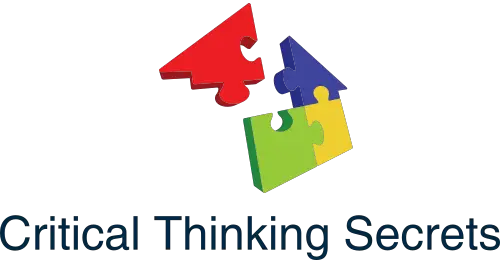Decision-making models are essential tools that help individuals and organizations make informed choices. By utilizing decision-making models, people can approach problems logically and select the most effective solutions.
These models include rational, bounded rationality, and Vroom-Yetton frameworks, among others, each suited to different situations.

Understanding these models can be beneficial as they offer structured ways to evaluate choices. The rational model emphasizes logical steps, while the Vroom-Yetton model focuses on situational leadership. Choosing the right model can lead to better outcomes and is vital for both managers and anyone facing complex decisions.
Biases and emotional influences can affect decision-making. Being aware of these factors and learning how different models work can help reduce mistakes. Understanding and applying decision-making models can be pivotal for personal growth and improved decision outcomes.
Key Takeaways
- Decision-making models provide structured ways to make choices.
- Different models suit different situations and decision types.
- Awareness of biases can improve decision-making effectiveness.
Fundamentals of Decision-Making
Decision-making is crucial in navigating choices in personal and professional settings. Understanding various models, identifying key components, and recognizing the role of structure can significantly improve decision outcomes.
Understanding Decision Models
Decision models serve as guides, providing frameworks to tackle different situations. One example is the Vroom-Yetton model, which helps leaders decide the best approach based on situational factors.
These models can range from rational, using logic and analytical thinking, to intuitive, which relies on gut feelings. Each model’s effectiveness depends on the context and complexity of the decision, ensuring that leaders choose the best fit for their needs.
Components of the Decision-Making Process
The decision-making process involves several components. It begins with defining the problem or decision at hand, which sets the context.
Next, criteria are established, detailing what matters most in making the choice. Then, potential solutions are identified and evaluated.
Finally, a decision is reached, and steps are taken to implement and review it. These components provide a structured approach, allowing for thorough analysis and informed choices.
Importance of Structured Decision Making
A structured approach to decision-making enhances clarity and reduces uncertainty. By systematically following steps and evaluating options, decision-makers ensure thorough consideration of all relevant factors.
This method is particularly useful for complex or high-stakes situations. Structured decision-making also helps in documenting the rationale behind choices, aiding future reflection and continuous improvement.
Such structure promotes confidence and resilience against challenges that may arise in the process.
Classical Models of Decision-Making
Classical decision-making models focus on logical reasoning and systematic processes. They vary in structure, from highly logical to more adaptable approaches, helping individuals and organizations make informed choices.
Rational Decision-Making Model
The rational decision-making model is known for its structured and logical approach. It involves clearly defining the problem, generating a list of possible solutions, evaluating these alternatives, and then selecting the best option based on a set criteria.
By considering all available information and potential outcomes, this model emphasizes systematic analysis and careful planning. Despite its usefulness, it may not always account for the complexity and unpredictability of real-world situations. This model is often used where information is abundant and time pressure is minimal.
Bounded Rationality Model
The bounded rationality model acknowledges that decision-makers face limitations in processing information. Instead of evaluating all options, individuals settle for a satisfactory choice rather than an optimal one.
These constraints can be due to limited time, resources, or cognitive capacity. This model reflects real-world decision-making where perfect information is rarely available.
It highlights the practical and realistic aspects of choices, emphasizing the importance of satisficing over optimizing. Bounded rationality is crucial for understanding how decisions occur in everyday contexts, offering insights into how people balance ideal outcomes with feasible solutions.
Creative Decision-Making Model
The creative decision-making model emphasizes innovation and out-of-the-box thinking. Unlike the rational model, it focuses on generating novel solutions when conventional methods fall short.
This model is particularly useful in ambiguous situations where standard approaches are ineffective. Creative decision-making encourages brainstorming and exploring multiple perspectives. It allows decision-makers to break free from traditional constraints, facilitating unique and effective solutions.
Building decision-making skills that promote creativity is vital for adapting to uncertain and dynamic environments. This model helps in harnessing new possibilities by valuing diversity of thought and encouraging experimentation in the problem-solving process.
Contemporary Models of Decision-Making
Contemporary decision-making models offer diverse approaches to making choices. These models emphasize intuition, leadership, and the use of experience to make informed decisions.
Intuitive Decision-Making Model
The intuitive decision-making model relies on a person’s instincts and gut feelings. This method is useful when decisions need to be made quickly without detailed analysis.
It is often rooted in deep experience and knowledge in a specific field. Professionals use this model when past experiences guide their understanding of similar situations.
Although faster, this approach can sometimes lead to biases. It works best for experts who have a strong background in their area, as they can trust their instincts more effectively. This model highlights the importance of tacit knowledge and its role in daily decision-making.
Vroom-Yetton Decision Model
The Vroom-Yetton decision model is a leadership-focused approach that helps managers choose the best way to make decisions in different situations.
Developed by Victor Vroom and Philip Yetton, it assesses various situational factors to determine the appropriate decision-making style.
The model emphasizes whether to include others in the process or decide independently.
The method uses a flowchart with questions to guide leaders. These questions revolve around factors like decision quality, collaboration, and time constraints.
By focusing on situational needs, it helps leaders ensure effective and timely decisions that align with organizational goals. This approach underlines the importance of adapting decision-making strategies to context.
Recognition-Primed Decision Model
The recognition-primed decision model blends intuition and analysis, where understanding the situation plays a vital role.
This model is based on recognizing patterns from past experiences to quickly assess and respond to new situations. Initially developed for high-pressure environments like firefighting, it is now used in various fields.
In practice, this model allows decision-makers to consider the options generated from past experiences, using them to evaluate outcomes.
They assess these by mentally simulating potential scenarios. This approach emphasizes rapid, yet thoughtful decision-making, balancing immediate instinct with structured evaluation. It is especially beneficial in situations where time for reflection is limited.
Cognitive Biases and Decision-Making
Cognitive biases can significantly impact how people make decisions, often leading to errors in judgment. Understanding common biases and learning strategies to counter them can improve decision-making skills and lead to better outcomes.
Understanding Cognitive Biases
Cognitive biases are mental shortcuts that can lead to incorrect conclusions. These biases often arise from the brain’s attempt to simplify information processing.
Biases like the confirmation bias can make a person favor information that supports their pre-existing beliefs.
Other common biases include the availability heuristic, where people judge the likelihood of an event based on how easily examples come to mind. Overconfidence bias can also cloud judgments by making individuals believe their knowledge or predictions are more accurate than they actually are.
Recognizing these biases is crucial for more accurate decision-making.
Impact of Confirmation Bias on Decisions
Confirmation bias significantly affects how individuals gather and interpret information. It leads people to seek out information that confirms their beliefs and ignore contrary evidence. This can result in poor decision-making because options become limited.
For instance, in professional settings, a manager might only seek feedback that supports their strategies, overlooking potential areas for improvement.
Studies, like those published on NCBI, show that this bias is pervasive in decision-making processes. Identifying confirmation bias in oneself or a group can improve outcomes by promoting a more balanced view of evidence.
Overcoming Biases for Better Outcomes
To overcome biases, individuals can adopt strategies such as seeking diverse viewpoints and questioning their assumptions.
Using decision aids and tools can also minimize the effect of cognitive biases by providing structured analysis, as seen in research from Tandfonline.
Encouraging reflective thinking is another way to counter biases, as it involves considering the reasons behind one’s beliefs and decisions.
Training programs can help in recognizing and reducing biases, thus enhancing decision-making skills. By addressing biases directly, decision-makers can improve the reliability and quality of their judgments.
Applications and Outcomes
Effective decision-making is vital for successful outcomes in various areas, from business to creative problem-solving. Understanding how decisions impact innovation and avoid pitfalls like analysis paralysis is important for achieving desired results.
Decision Making in Business
In the business world, effective decision-making is crucial for success. Businesses often rely on decision-making models to assess options and outcomes.
These models help determine the right decision criteria, such as cost, benefits, and risks.
A popular model is the Vroom-Yetton framework, which factors in the situation and the leadership style involved. This model assists in choosing methods to navigate business challenges.
By focusing on specific criteria, companies ensure decisions that align with their goals and improve motivation among team members.
Innovative Solutions Through Decisions
In a dynamic environment, innovative solutions often arise from thoughtful decision-making.
Using frameworks that emphasize motivation, like the Golden Circle, can yield fresh ideas by starting with “why” rather than “what” or “how”. This approach frames decisions around purpose and intent, spurring creativity.
Equipped with clear objectives and strategies, teams can explore unconventional solutions.
By carefully weighing alternatives and fostering a culture of open communication, decision-making can drive breakthrough innovations. This practice helps generate impactful results and supports organizational growth.
Analysis Paralysis and Decision Effectiveness
Analysis paralysis occurs when overthinking slows down the decision process, often due to too much information or too many choices. This can hinder effective decision-making by causing delays and indecisiveness.
People sometimes become stuck at the evaluation stage, unable to choose an option.
To combat this, setting clear decision criteria can streamline choices and reduce overwhelm. Prioritizing options based on their alignment with goals helps ensure decision effectiveness.
Managing this paralysis involves applying structured methods to swiftly assess and make informed decisions, avoiding unnecessary hesitation.
Improving Decision-Making Skills
Improving decision-making skills involves training, using effective tools, and learning from past experiences.
Training and development programs can enhance one’s confidence and ability to make decisions.
Utilizing frameworks and tools helps in structuring the decision-making process. Reviewing previous choices provides insights into improving future decisions.
Training and Development for Decision-Making
Training programs can significantly improve decision-making skills.
Online courses, such as those offered by leadership platforms, help individuals gain necessary insights and boost confidence.
For instance, many business professionals report increased confidence after completing courses that focus on decision-making techniques for managers.
Workshops and seminars also play a crucial role. They provide hands-on experiences and face-to-face interactions with experts.
These sessions often include problem-solving exercises that can mirror real-life scenarios. It’s not just about learning theories; it’s about applying them effectively.
Moreover, mentorship programs offer personal guidance. Having a mentor allows individuals to discuss and refine their decision-making processes. This personalized approach helps in understanding biases and recognizing areas for improvement.
Tools and Frameworks for Enhanced Decisions
Utilizing decision-making frameworks can provide clarity and structure.
For example, the Vroom-Yetton model assesses situational factors to determine the most effective style for making decisions. Frameworks like these guide leaders to make informed choices suitable for specific scenarios.
Tools such as decision trees, SWOT analysis, and software-based decision aids enhance systematic analysis. These tools simplify complex information, enabling decision-makers to weigh options effectively. They are especially useful in collaborative decision-making settings, where input from multiple stakeholders is considered.
Using structured methods facilitates faster decision-making processes.
With clear steps outlined, individuals can follow a logical path to reach conclusions, reducing time and stress.
Evaluating and Learning from Past Decisions
Reviewing past decisions is essential for growth.
This includes analyzing outcomes and identifying what went well and what didn’t. Understanding successes and failures contributes to refining one’s decision-making skills.
Decision analysis involves gathering data on previous choices and examining factors that influenced the outcomes.
This method encourages a deeper understanding of how decisions impact results.
Feedback loops foster continuous improvement.
Engaging with peers or teams to discuss previous decisions provides different perspectives. This collaborative approach ensures that lessons are shared, helping everyone involved to learn and advance together.
Conclusion
Effective decision-making is essential in both personal and professional settings. Different decision-making models offer various approaches to tackle challenges and make informed choices.
Vroom-Yetton Model: This model considers situational factors to determine the best decision-making style for a given scenario. Leadership plays a crucial role here, guiding managers to choose suitable approaches.
Rational Decision-Making Model: This structured model focuses on making clear and logical decisions. By following specific steps, like defining the problem and criteria, individuals can carefully evaluate their options.
Critical Thinking Models: These models emphasize evaluating assumptions and considering different perspectives. Applying critical thinking helps improve judgment and reasoning skills.
Common decision-making models provide frameworks to ensure that decisions are thoughtful and relevant. They help in breaking down complex situations into manageable steps for effective outcomes.
Understanding these models can enhance both organizational and personal success by providing structured methods to make better choices. Consider each model’s strengths and how they can apply to diverse situations. This way, decision-making becomes a deliberate process, leading to more effective solutions.
Frequently Asked Questions
Decision-making models are essential tools across various fields, including education, leadership, and management. Understanding these models can enhance problem-solving and strategic planning. Below are some common questions about decision-making models.
What is the rationale behind the rational decision-making model?
The rational decision-making model uses logic and systematic steps to solve problems.
It starts by clearly defining the problem, then gathers information, identifies options, and finally makes a decision. It’s based on logical reasoning and helps in making informed choices.
How do different decision-making models apply in educational settings?
In education, decision-making models guide teachers and administrators in planning and problem-solving.
They help in setting objectives, evaluating teaching methods, and making curriculum-related decisions, ensuring that educational goals are met effectively.
What are some examples of decision-making models used in organizational behavior?
Models like the GROW model and the Rational Model assist in organizational behavior.
The GROW model focuses on setting goals and exploring options, while the Rational Model emphasizes logical evaluation of alternatives for effective decision-making.
Can you explain the decision-making models commonly implemented in leadership?
Leadership often utilizes models such as the Vroom-Yetton model, which adapts to situational needs.
This model considers factors like time constraints and employee involvement to determine the best approach to decision-making, enhancing leadership effectiveness.
What decision-making models are beneficial for students to learn and apply?
Students benefit from learning models like the GROW model.
It teaches them to set goals, consider their current situation, explore options, and create action plans. These skills are valuable for personal development and problem-solving in educational contexts.
In management, which decision-making models are most effective and why?
In management, the Rational Model is highly regarded for its structured approach. It helps managers assess situations by breaking down complex problems into manageable steps. Then, they use logical reasoning to evaluate alternatives and reach the best decision.





